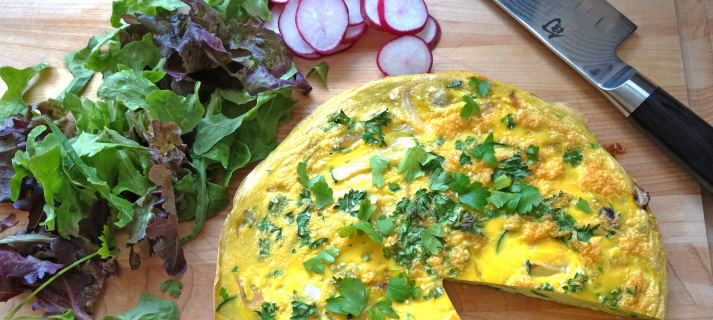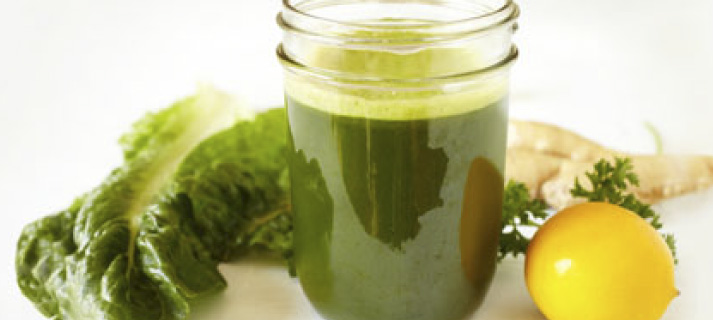In my work as a clinical nutritionist, I have developed a simple philosophy of food that has greatly helped my clients enjoy healthier, more balanced meals—without counting calories or having to remember complicated rules. I refer to this philosophy as “Lighten Your Load.”
“Lighten Your Load” focuses on the “density” and the “balance” of the foods we eat, and categorizes them based on their impact on our metabolic fitness and body weight. In order to communicate this idea, I use the image of an old-fashioned scale. This visualization helps my clients to easily make decisions about which foods to eat and in which proportion.
Take a look at the images below. On the left are foods that are “Dense Load” and then on the right are foods that are “Light Load.” “Dense Load” foods are proteins such as meats, fish, poultry, eggs, legumes, and protein powder; starchy vegetables such as potatoes, sweet potatoes, turnips, rutabaga, and winter squash; dairy products like cheese, yogurt, and butter; and legumes, nuts, seeds, and grains. Although they are all good for you, however they are dense in weight. “Light Load” foods hold nature’s rich bounty of nutrient-packed, non-starchy vegetables and fruits which are much lighter in weight.


As you prepare each of your meals, visualize what happens if you put these foods on a scale. If your breakfast is a plate of eggs, sausage, and toast, the scale will tip due to the density of these foods. So how could you create balance in that meal? Simple—instead of using two or three whole eggs, use one whole organic free-range egg scrambled with egg whites. Add to the pan some onion, peppers, mushrooms, and power greens, sauté lightly in olive oil, and serve with a sliced beefsteak tomato. A balanced meal like this supports a fit metabolism and a healthy weight.
I like to introduce this food philosophy at the very beginning of the summer, as the season’s fresh, plentiful, and inexpensive fruits and vegetables makes it so much easier and cheaper to start. Now’s the best time to pile your plate with greens, bok choy, fennel, portabella mushrooms, beefsteak tomatoes, eggplant, bell peppers, zucchini, and summer squash, as well as summer fruits like berries, fresh figs, papaya, and kiwi. Ready to get started? These “lighter load” choices for breakfast, lunch, and dinner will help you feel fit and energetic enough to greet the summer head-on.
Balanced Breakfast Option 1: Summer Frittata
In a pan with a little olive oil, sauté a chopped Vidalia onion with some zucchini, bok choy, and sliced orange peppers.
Beat 4 eggs and 1 cup of egg whites, and then pour the egg mixture into the pan over the sautéed vegetables. Cook without stirring for a few minutes until the bottom is set. Sprinkle 1/4 cup crumbled feta cheese over the top.
Place the pan in the oven at 350 degrees and allow the egg to set completely. Cut into 4 wedges and serve with 1 cup of basic Israeli salad—chopped tomato, onion, parsley, rice vinegar, and olive oil.
Balanced Breakfast Option 2: Meal in a Glass
Blend together 1 large carrot, 2 romaine lettuce leaves, 2 kale leaves, 4 inches peeled cucumber, 1–2 stalks celery, 1 inch peeled sliced ginger, 1/4 peeled lemon, 1 tbsp flax seeds, 1 tbsp chia seeds, and water.
Enjoy with 3 small sausages, such as Trader Joe’s Chicken Breakfast Sausage, and a sliced beefsteak tomato.
Balanced Lunch: The Salad Bowl
Viva Italia—Mix together arugula, watercress, endive, radicchio, and some baby greens. Top with grilled vegetables such as zucchini, mushrooms, and peppers. Add 4 oz sliced grilled chicken. Garnish with 5 black olives and dress with a balsamic vinaigrette.
It’s Greek to Me—Top mixed greens with sliced cucumber, tomato, peppers, onions, and lightly steamed broccoli. Add 4–6 grilled shrimp and 2 tbsp of crumbled feta cheese. Dress with olive oil, oregano, dill, and red wine vinegar.
Salad Nicoise—Start with a bowl of mixed field greens, and top with wedges of tomato and steamed green beans. Add 3 oz grilled tuna and 1 boiled egg, quartered. Garnish with 5 olives and julienned basil leaves. Dress with olive oil and balsamic vinegar.
Balanced Dinner Option 1: The Dallas BBQ with Slaw & Greens
BBQ Chicken—Marinate a 6–8 oz boneless chicken breast in a BBQ sauce in the fridge for 2–4 hours and grill.
Healthy Slaw—Mix together shredded white and purple cabbage. Dress with a blend of olive oil, white balsamic vinegar, mustard, and 1 tsp honey.
Wilted Greens—Sprinkle a mix of kale, chard, and collard greens with onion- and garlic-infused water. Drizzle with olive oil and sprinkle with Himalayan salt.
Balanced Dinner Option 2: Portabella Mushroom Stack & Gazpacho Soup
Portabella Mushroom Stack—Grill a portabella mushroom, bell pepper, Vidalia onion, and sliced zucchini. On a plate, drizzle a little olive oil over some spinach and mix in some peeled sliced garlic and Himalayan salt. Stack the mushroom and vegetables on top of the spinach.
Simple Gazpacho Soup—In a large bowl, mix 2 cups peeled and diced English cucumbers, 2 cups diced red bell pepper, 2 cups diced beefsteak or roma tomatoes, 1/2 cup diced Vidalia onion, 2 cups tomato juice, 1/2 cup red wine vinegar, 1/3 cup extra-virgin olive oil, and Tabasco sauce to taste. Transfer half of the mixed ingredients to a food processor and blend. Add the blended soup back into the bowl. Refrigerate, and garnish with chunks of avocado before serving.
(Original Post on Boomshop)








